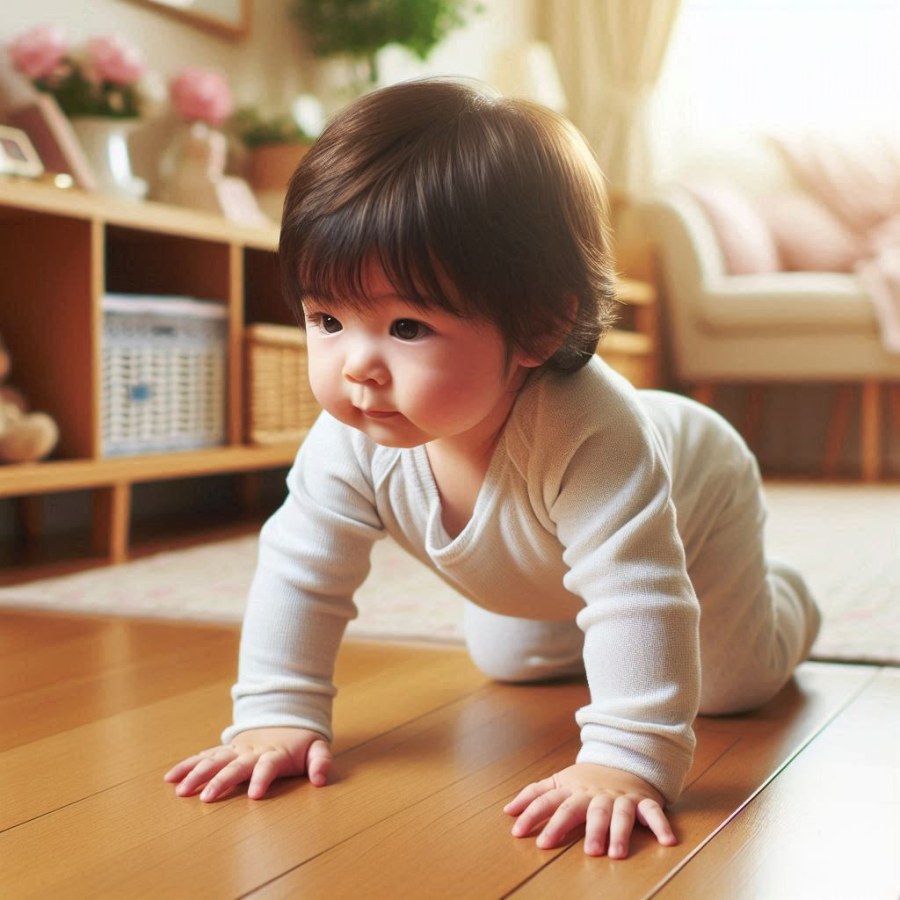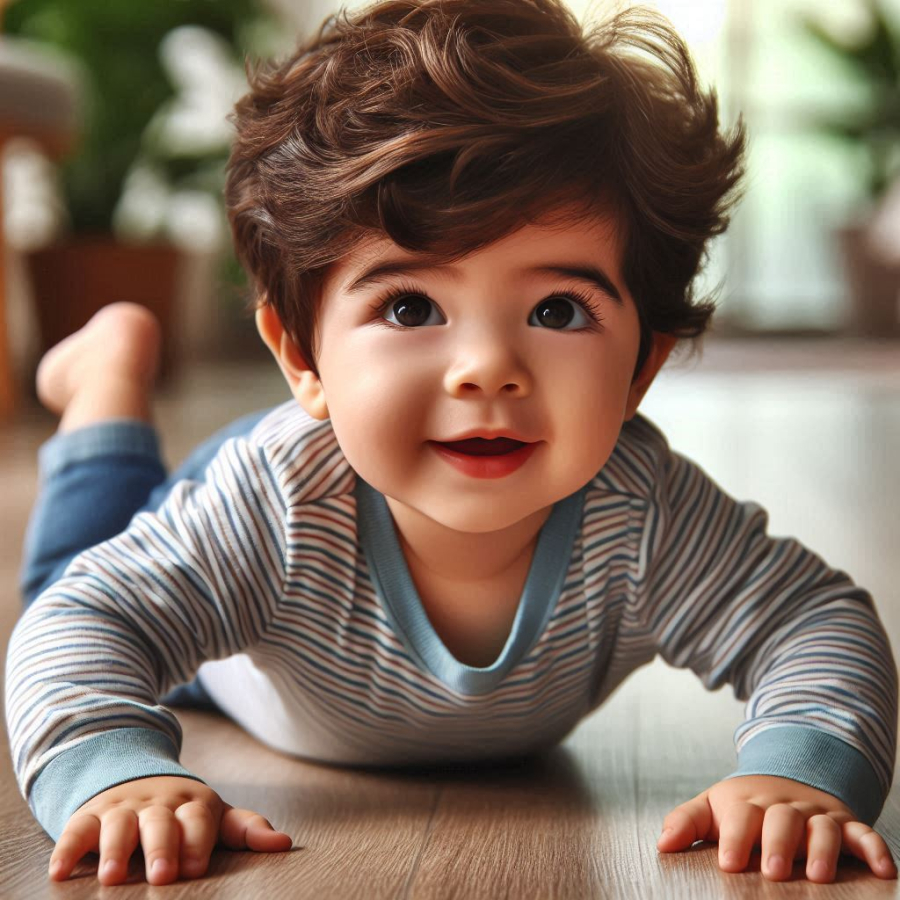The health status of each child varies greatly and includes differences in weight, height, and cognitive development. These factors not only affect overall health but also a child’s cognitive and thinking abilities. Many parents may not fully understand the importance of crawling for their child’s development.
In fact, crawling is governed by the child’s brain. During this process, children not only exercise their muscles but also stimulate the development of gross and fine motor skills.
When children crawl, they have the opportunity to explore their surroundings, helping them to identify and analyze objects, shapes, and colors. These activities not only enhance the connection between neurons in the brain but also promote intellectual development and future learning abilities. Specifically, crawling provides three important benefits for children.

Crawling allows children to explore their surroundings
Promotes Brain Activity
Crawling is not just a form of exercise but also a complex process governed by the brain. As children crawl, their brain sends signals to their limbs to control their movement, helping them coordinate their actions and move more nimbly.
This coordination is crucial for the development of fine and gross motor skills and helps children understand their emotions better as they explore the world around them.
Additionally, crawling stimulates brain development. As children move, their brains actively process and interpret information from their surroundings, forming new neural connections.
The brain of a child is highly adaptable and constantly evolves through life experiences. Physical activities like crawling not only improve cognitive abilities but also enhance memory and concentration.
If a child is not encouraged to crawl or is uninterested in the activity, their natural brain development may be negatively impacted due to the lack of diverse and enriching motor experiences.
Enhances Cognition
When children crawl within the confines of their homes, they encounter different directions and viewpoints, improving their cognitive abilities and developing fundamental motor skills. With each turn around a corner, children not just explore their surroundings but also learn to locate themselves within that environment. This innate curiosity expands their knowledge and thinking capabilities.
After mastering crawling, children can significantly expand their exploration of the world around them. They can access a multitude of objects and novel experiences, ranging from indoor toys to outdoor entities. These activities introduce them to concepts such as distance, size, and shape.
Beyond indoor exploration, crawling outdoors offers children the opportunity to connect with nature. They can feel the softness of grass beneath their palms, listen to birds chirping, and observe various animals. These experiences not only enrich their knowledge but also enhance their sensory perception of the world.
All these factors collectively contribute to a child’s intellectual development. Crawling not only encourages physical activity but also creates opportunities for interaction with the surroundings, leading to more efficient brain functioning.
Evidence suggests that early motor milestones are crucial as they lay the foundation for cognitive and emotional development throughout a child’s life.

Early motor milestones are essential for cognitive and emotional development
Fosters a Spirit of Exploration
When children start crawling, it marks not just a step forward in mobility but also a precious opportunity to discover the world around them. They will begin to explore and uncover new things, from familiar objects within their homes to unfamiliar sounds and sights outdoors. Through these experiences, children develop initial concepts of space, size, and color.
Crawling not only boosts intellectual development and cognition but also aids in metabolism, strengthens bones, and enhances muscular strength. As children crawl, they adjust their bodies to maintain balance, stimulating muscle group development and improving limb coordination.
Crawling also lays the foundation for those initial steps. As children become adept at crawling, their bodies optimally prepare for the subsequent stage of walking.
While some parents may consider it normal for their child to not crawl in the traditional manner, research indicates that crawling is an integral part of a child’s holistic development.
Experts advise that it is crucial for children to progress through each motor stage naturally. Therefore, creating a safe environment and encouraging children to crawl is an excellent way to support their healthy growth.
In summary, crawling is not just a preliminary step in physical development but also a gateway to new discoveries for children. Parents should be patient and provide their children with the freedom to crawl, as this will bring long-term benefits to their future development.
5 Simple Things That Busy Parents Can Do With Their Children That Are More Valuable Than Gold
“These often-overlooked factors are key to your child’s future success and well-being. Many parents are unaware of the impact these elements can have on their children’s lives, but it’s time to shine a light on them. By paying attention to these aspects, you are giving your child the best chance to thrive and succeed in a rapidly changing world.”






































